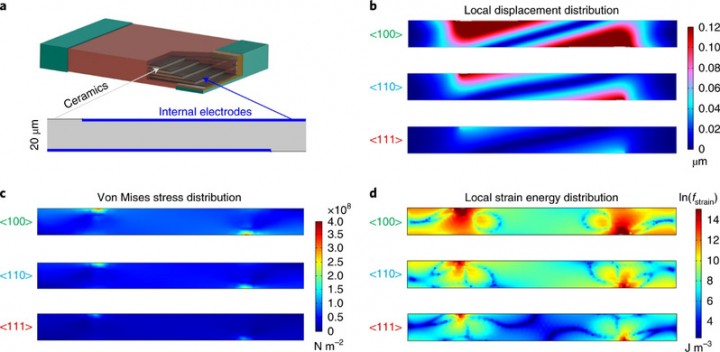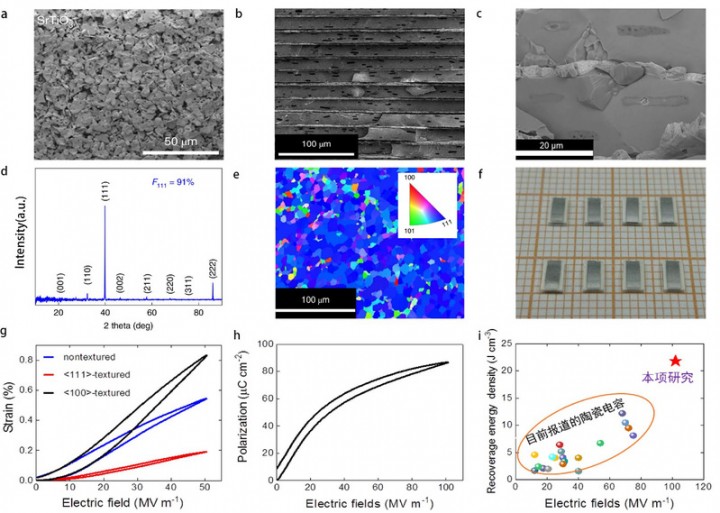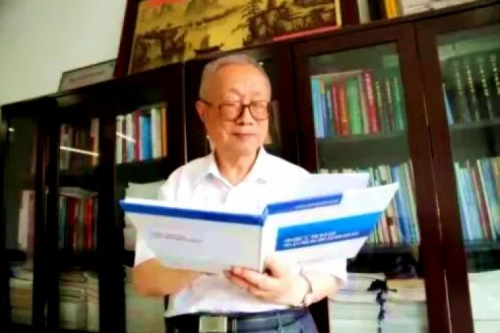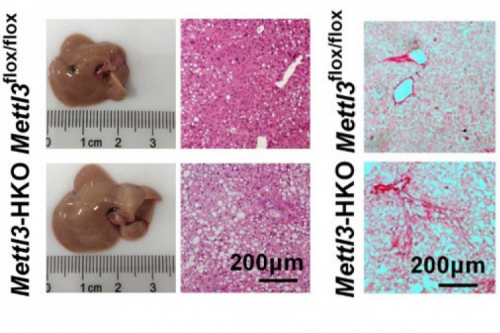Harbin Institute of Technology News (the School of Instrumentation/text) Recently, the research group of Associate Professor Chang Yunfei of the School of Instrumentation, together with Xi'an Jiaotong University, University of Wollongong in Australia and other units, published the latest research results on multilayer textured ceramic capacitors for energy storage. The result was published in the international academic journal Nature Materials, under the title of "Grain-orientation-engineered multilayer ceramic capacitors for energy storage applications". And Chang Yunfei is the first corresponding author of the paper.
Ceramic capacitors are widely used in many fields such as electronics, communication, transportation and pulse power devices due to their advantages of high discharge power, fast charge discharge rate and anti decay cycle. The characteristics of large capacitance, miniaturization and high withstand voltage are the development trends of ceramic capacitors. However, a major problem restricting the development of ceramic capacitors is the low energy storage density caused by the lower breakdown electric field strength.
Based on the anisotropic characteristics of the electrostrictive effect of the perovskite structure, the research team proposed a new design idea, which is to reduce the strain and stress generated by the capacitor under external field stimulation by controlling the ceramic grain orientation (texture engineering). It can avoid the ceramic breakdown caused by microcracks and tensile stress, thereby improving the breakdown electric field strength and energy storage density. The research team skillfully used local chemical microcrystalline transformation method to prepare strontium titanate templates with high aspect ratio. Then based on the template grain growth technology, a multilayer ceramic capacitor with 91% texture along the<111>preferred orientation was prepared for the first time. The breakdown electric field is increased to 100 MV m-1, and an energy storage density as high as 21.5 J cm-3 is obtained, which is the highest value currently known for ceramic capacitors. This research provides new design ideas for breaking through the technical problems that restrict the development of ceramic capacitors. And this idea can be widely used to improve the stability and reliability of other electronic functional ceramics, such as solid-state refrigeration ceramics based on the electric card effect.

Figure 1 The finite element simulation of the strain and elastic energy distribution of a single ceramic layer of a multilayer ceramic capacitor: (a) Schematic diagram of ceramic capacitor and single ceramic layer; (b) Local displacement, (c) Local stress distribution and (d) Local elastic energy density of perovskite samples oriented along<100>,<110>and<111>.

Figure 2<111>Orientation structure characteristics and energy storage characteristics of multilayer textured ceramic capacitors: Cross-section micrographs of (a) strontium titanate template and (b, c)<111>multilayer textured ceramic capacitors; (D) XRD pattern and (e) grain orientation distribution map of textured ceramic; (f) Photo of multilayer textured ceramic capacitor; (g) The relationship between the strain and electric field of random orientation and multilayer ceramics along<001>and<111>orientations; (h) The relationship between the polarization intensity of<111>oriented multilayer ceramics and electric field; (i) The comparison of energy storage density of<111>oriented multilayer textured ceramics and ceramic materials reported in the literature.
This research was supported by the General Project of the National Natural Science Foundation of China and the Outstanding Youth Project of the Natural Science Foundation of Heilongjiang Province.
Article link:https://www.nature.com/articles/s41563-020-0704-x




